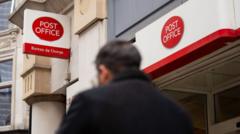Are Tube Fare Evasion Prosecutions Surging to New Highs?

Understanding the Rise in Fare Evasion Prosecutions on the London Underground
In recent years, the London Underground has witnessed a notable increase in fare evasion prosecutions, reaching the highest levels recorded in six years. This surge has sparked discussions surrounding the implications of fare evasion, its impact on public transportation funding, and the efforts of Transport for London (TfL) to combat this issue. With figures revealing thousands of prosecutions and penalty fare notices issued, it is imperative to explore the factors contributing to this rise, the responses from TfL, and the broader implications for London’s public transport system.
The Current Landscape of Fare Evasion
In the financial year 2024-25, TfL prosecuted 3,691 individuals for fare evasion on the London Underground. Additionally, they issued 13,118 penalty fare notices (PFNs) and 850 written warnings. Comparatively, the London Overground saw 12,527 PFNs issued, although prosecutions dropped significantly to 3,044, reflecting a decline of one-third from the previous year. These statistics illustrate a complex scenario where fare evasion remains a pressing issue, yet enforcement actions can vary significantly across different transport services.
The Context of Fare Evasion
Fare evasion is often framed as a non-victimless crime, as it directly impacts the financial resources available for maintaining and improving London’s public transport infrastructure. TfL has articulated that fare evasion "robs Londoners of vital investment," emphasizing the need for robust enforcement measures to deter offenders. Their commitment to reducing the fare evasion rate to 1.5% by 2030 reflects a proactive approach to safeguarding the integrity of the transport system.
The Historical Perspective
The landscape of fare evasion has evolved over the years. In 2018-19, prosecutions peaked at 4,919, but this figure dropped to 3,279 the following year. The onset of the COVID-19 pandemic drastically altered passenger numbers, leading to a significant decline in fare evasion prosecutions. For instance, during the 2020-21 period, no PFNs were issued on the London Overground, and only 134 prosecutions occurred in 2021-22. This decrease was largely attributed to the enforcement of government COVID regulations rather than fare evasion enforcement.
Recent Trends
As ridership numbers rebounded in the wake of the pandemic, so too did fare evasion incidents. The estimated fare evasion rate across all TfL services between April and December 2024 was approximately 3.4%, which, while showing a slight decline of 0.4% from the previous year, still indicates a significant issue that TfL is keen to address. The rise in warnings issued—948 on the Underground and 887 on the Overground in 2023-24—suggests a strategic pivot towards deterrence alongside enforcement.
TfL’s Approach to Combatting Fare Evasion
Transport for London has laid out a multifaceted approach to combat fare evasion, focusing on deterrence, detection, and enforcement. Siwan Hayward, TfL's director of security, policing, and enforcement, has emphasized that the majority of passengers do pay their fares correctly. However, he also points out that fare evasion is "unacceptable," leading to increased investments in enforcement teams.
Investments in Enforcement
In 2023-24, TfL committed nearly £14.2 million to tackle fare evasion on the Tube and £7.7 million on buses, collecting £1.3 million in penalty charges. This significant financial commitment reflects the seriousness with which TfL views fare evasion as a threat to the sustainability of public transport funding.
- Increased Personnel: TfL has expanded its team of professional investigators to efficiently target prolific fare evaders.
- Uniformed Officers: Over 500 uniformed officers are deployed across the network, addressing not only fare evasion but also antisocial behavior to enhance safety for both staff and customers.
- Public Awareness Campaigns: Initiatives aimed at educating passengers about the importance of fare compliance and the repercussions of evasion are also part of TfL’s strategy.
Implications of Fare Evasion on Public Transport
The implications of fare evasion extend beyond immediate financial losses; they impact the overall perception of public transport and its effectiveness. Here are some key considerations:
Financial Impact
Fare evasion results in lost revenue that could otherwise be used for essential services, maintenance, and upgrades. This is particularly crucial in a city like London, where public transport is a lifeline for millions.
Public Perception
Frequent fare evasion can erode public trust in the transport system. If passengers perceive that fare evasion is rampant and enforcement is lax, they may feel less inclined to pay their fares, creating a vicious cycle.
Operational Challenges
High levels of fare evasion can lead to operational challenges, including increased costs for enforcement and a need for additional resources to manage the fallout from non-compliance. This may divert funds from other essential areas within TfL.
Future Directions for TfL
Looking ahead, TfL's goal of reducing fare evasion to 1.5% by 2030 requires a comprehensive strategy that balances enforcement with public engagement. This involves fostering a culture of compliance among passengers, enhancing service quality, and ensuring transparency in how fares contribute to the system's operation and improvement.
Potential Strategies
To achieve its objectives, TfL could consider implementing several strategies:
- Enhanced Technology: Leveraging technology to streamline fare payment processes and provide passengers with real-time information about fare compliance.
- Community Engagement: Building partnerships with community organizations to promote fare compliance and educate the public about the importance of fare payment.
- Feedback Mechanisms: Establishing channels for passenger feedback on fare pricing and enforcement practices to build trust and transparency.
Conclusion
The rising prosecutions for fare evasion on the London Underground highlight a critical issue that affects the financial viability and public perception of the city's transport system. TfL's proactive measures to combat fare evasion, including strategic enforcement and community engagement, are essential for ensuring the sustainability of public transportation in London. As the city continues to evolve, so too must its strategies for maintaining a fair and efficient transport network. Understanding the complexities around fare evasion can help passengers appreciate the value of complying with fare regulations. Will TfL meet its ambitious target of reducing fare evasion by 2030? The answer lies in the collective efforts of both the authorities and the passengers who rely on public transport every day.
FAQs
What are the consequences of fare evasion on the London Underground?
Fare evasion can lead to legal consequences, including fines and prosecution. It also impacts the overall funding and maintenance of the public transport system.
How does TfL enforce fare payment?
TfL enforces fare payment through penalty fare notices, written warnings, and prosecutions. They also deploy uniformed officers and professional investigators to deter and detect fare evaders.
What is the fare evasion rate on London transport services?
As of April to December 2024, the estimated fare evasion rate across all TfL services was approximately 3.4%.
As London continues to adapt to changing dynamics, how do you think public transport authorities should address fare evasion? #FareEvasion #LondonTransport #PublicSafety
Published: 2025-07-14 00:02:30 | Category: technology



